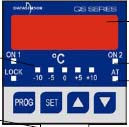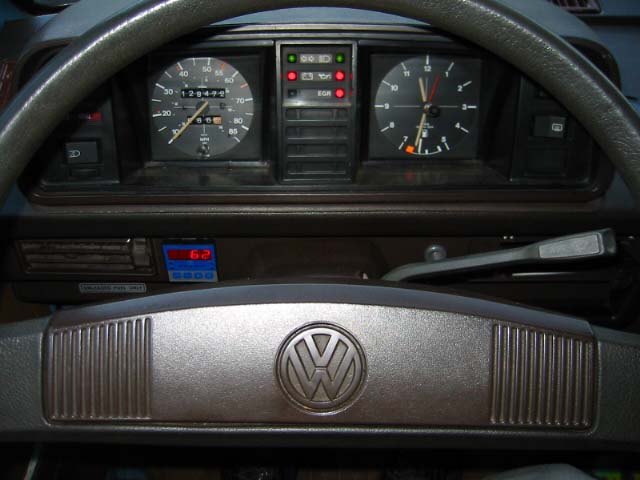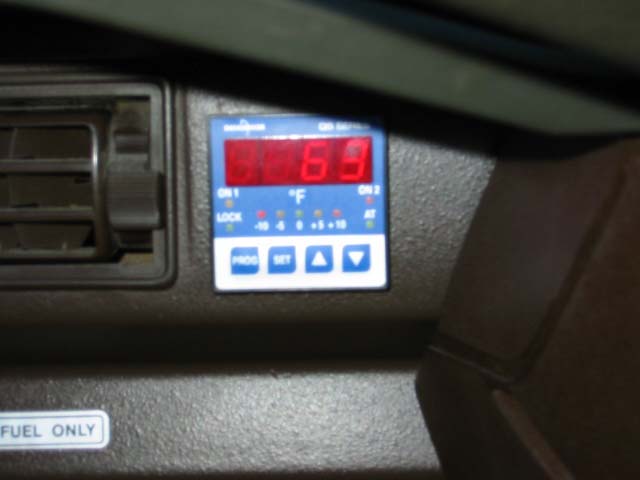An accurate Cylinder Head Temperature gauge for my aircooled Vanagon.
Everyone should know that the fairly popular VDO CHT Gauge simply isn't very accurate.
What's needed is something which will read a thermocouple and which has temperature compensation. PID Controllers are one device which does this. I found a PID controller which would run on 12V on eBay. Even luckier, I was the only one to bid on it, and got it for $5 (plus another $5 shipping)! If you want to go looking, search for "temperature controller" on eBay. There are lots of 120-240V ones available in the $50 range. Ones which can work from 12V are harder to find.
Anyway, what I got was a 1/16 DIN sized (about 2x2 inches), microprocessor driven controller. It has 2 different relay outputs, one intended to drive the process (heating or cooling), and the other an alarm output. The unit I got is a QS-00 from Datasensor, an Italian company. Out of the box, it is accurate to 0.4% of full scale (about 4 degrees for the thermocouple I used). It can be tweaked to be better.
I'm using it mainly for it's ability to read and display from a thermocouple, and not using it's advanced PID capabilities at all.
Using a PID for an accurate CHT can be less expensive than what's probably the most popular purpose-built gauge, from Dakota Digital.

I didn't want to mount it on top of the dash, and did want it visible when driving. The only location which had enough depth behind it was to the left of the steering column. Out came the rotary tool, and here's a picture of the result from the driver's view and another from straight on.


I also got a nice length of stainless steel braid covered Type E thermocouple wire from a different eBay vendor. Most PID controllers will work with any of the common thermocouple types. I chose "E" because that's what the nice stainless sheathed wire came in, and it's the most accurate type for the temperature range of a cylinder head. I ran the wire out through one of the existing grommets in the front, and followed the heater box cables to the rear. For now, I've got the end clamped between a couple of copper washers bolted to a threaded hole in the #4 cylinder. This hole is similar to the one used for the VW ECU Temperature Sensor II. It's not ideal for CHT reading (too far from the combustion chamber and too close to the intake), but it was quick and easy and didn't require that I remove any engine tin. I'll look for a better spot later, maybe on the bottom of the cylinder.
I plan on using the outputs - the first for a temperature warning (I may use the EGR LED in the dash), and the second for a buzzer type alarm. The temperature for the first can be easily adjusted by pushing the up/down buttons on the front of the PID controller. The alarm can be set through a menu system to be a programmed number degrees above the first setting, or can be set to a fixed temperature. I'll have to drive a bit to determine what temperatures may be appropriate. It does have front panel LEDs associated with these outputs, but they're not very bright and are pretty small.
Right now, my transmission is out for repair, so I have no way to start the engine and see what the readings will be in this location. It does track ambient temperature well (although slowly, due to the thermal mass).


